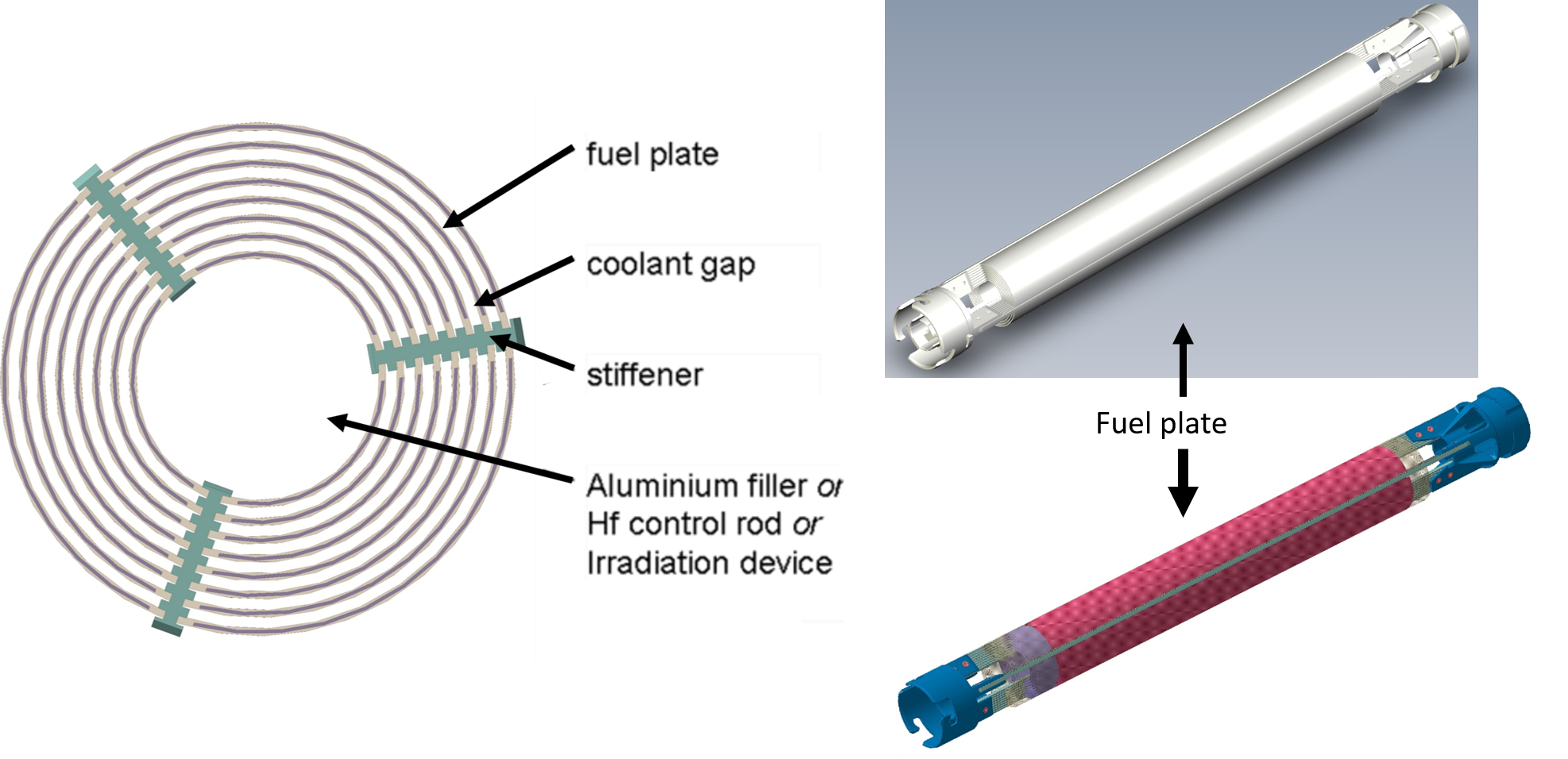REACTOR CORE
REACTOR CORE
The JHR Material Test Reactor core will have a maximum power of 100 MWth.
It is comparable to other Material Test Reactor around the world, though more powerful than most of other reactors producing artificial radioisotope :
The JHR Material Test Reactor is 40 times less powerful than an EDF nuclear power reactor, though 10 times denser in power.
With respect to an electricity production unit, a distinction is made between electric power which represents the electricity produced (expressed in megawatts of electricity, MWe), and thermal powerwhich isproduced by the core and only part of it used to produce electricity (expressed in megawatts thermal, MWth). There are thus two types of megawatts.
Approximately 3 units of primary energy (fuel) are needed to generate 1 unit of useful electric energy (meter reading) in a thermal power plant that uses a fuel to heat water, make steam, turn a turbine and drive an alternator. Around two thirds of this energy is actually converted into thermal energy (heat), which can be partially recovered in heating systems for example.
The JHR Material Test Reactor is not designed to produce electricity, though it does produce heat during operation (~100 MWth).
The core is about sixty centimetres in diameter and height. It will be contained in a caisson (i.e. reactor block) that will be sealed and immersed in a pool.
The core will comprise up to 37 fuel assemblies surrounded by a reflector* (see diagram below) to improve core operation. This material test reactor will be loaded with fuel enriched with uranium-235. This fuel will produce the very high neutron fluxes needed to conduct material ageing studies.
The JHR Material Test Reactor fuel assembly is composed of 3 sectors with 8 concentric plates each.

The JHR Material Test Reactor is designed to provide irradiation locations in the reactor core (blue area), which give the highest ageing rate, as well as irradiation locations in the beryllium reflector (yellow area) area around the reactor, which provide the highest thermal flux.

Numerous locations have been incorporated into the reactor design to allow up to 20 simultaneous experiments with a broad range of irradiation levels:
- 7 in-core locations for experimental devices with small diameters up to 33.1 mm (101, 105, 203, 207, 211, 303, 307, 313)
- 3 in-core locations for experimental devices with large diameters (80 mm) up to 86 mm diameter (103, 211, 301)
- 16 fixed reflector locations for experimental devices with diameters up to 97 mm. Two of them (C311 and C413) will be used to monitor vessel material ageing due to irradiation)
- 1 fixed reflector location for an experimental device with a diameter up to 200 mm (P322)
- 4 displacement devices located in water channels penetrating the beryllium reflector for experimental devices with diameters up to 100 mm (T5, T8, T10, T12)
- 4 additional displacement devices for 99Mo production (T0 to T3).



